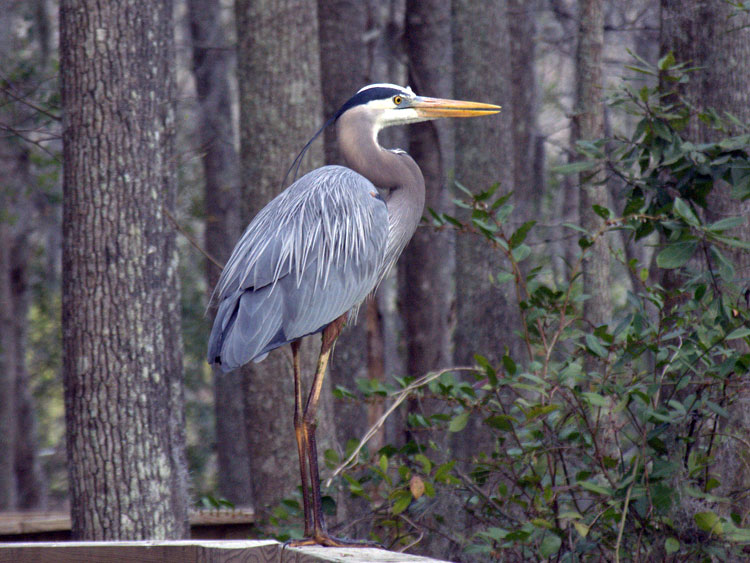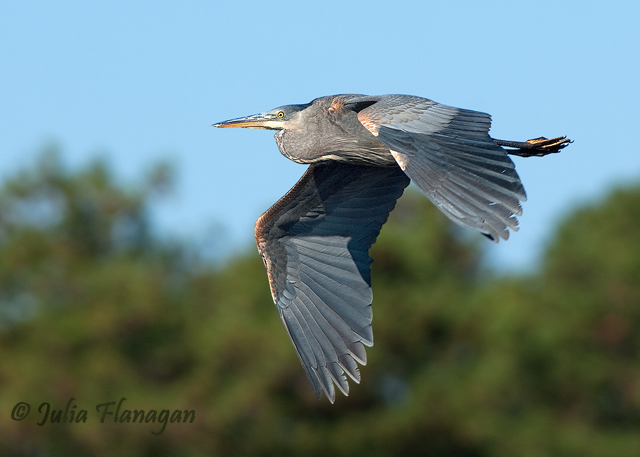
Photos -
Above
© Kim Hosen, Whooping Crane Conservancy, Hilton Head Plantation, South Carolina, May 2008 |

Great Blue Heron The largest heron in North America, the Great Blue Heron is also one of our most adaptable and widespread birds. Great Blue Herons are often seen flying high overhead with slow wing-beats and long legs extended behind. With a six-foot wingspan, they look huge in flight. They hold their necks in an S-shape when taking off from a perch. Look for them wading through wetlands, flooded meadows, along pond edges and shorelines… anywhere there’s water. With long sharp bills at the end of long necks that snake out after fish, amphibians, reptiles, aquatic insects or birds in the blink of an eye, Great Blue Herons are sucessful predators. Great Blue Herons nest in large colonies, where their bulky stick nests and raucous calls dominate the forest canopy. Repeated human intrusion into nesting areas often results in nest failure, with eggs and/or chicks abandoned. With more than 1,400 nests, the Great Blue heron rookery at Mason Neck National Wildlife Refuge is the largest in the Mid-Atlantic region. |





